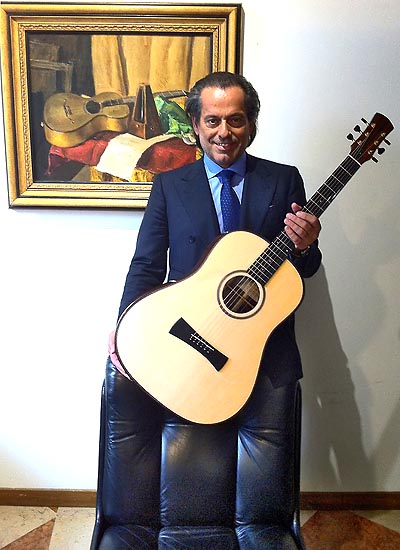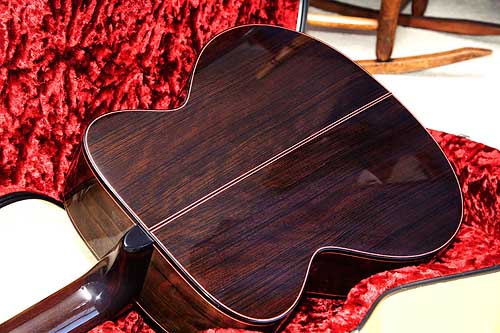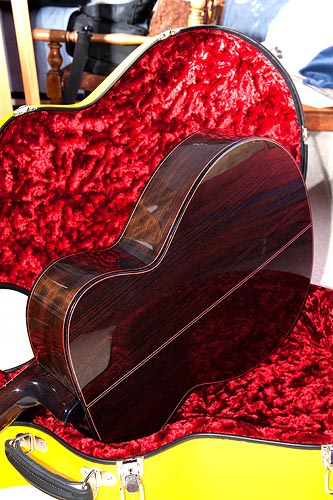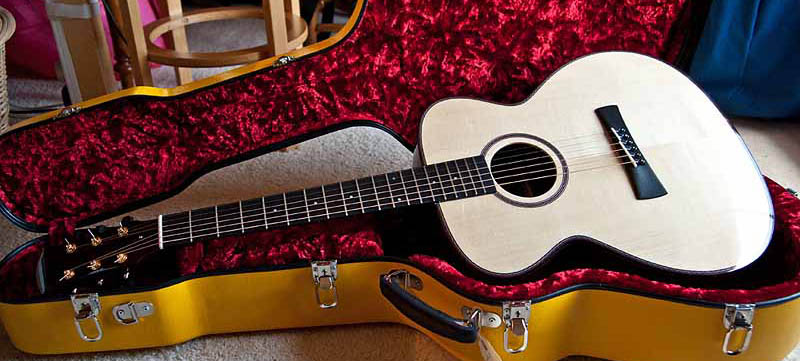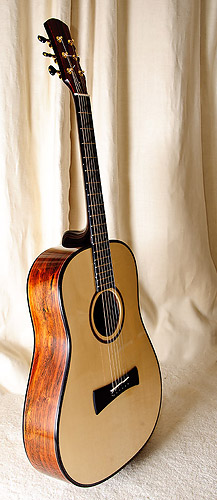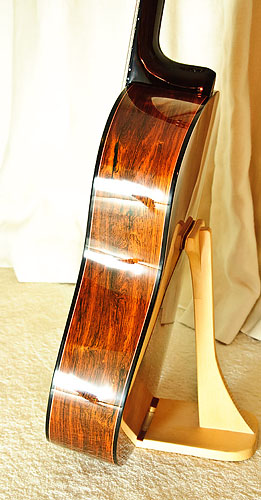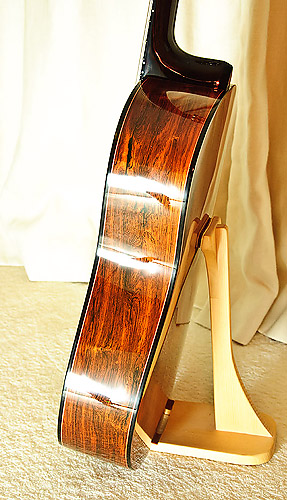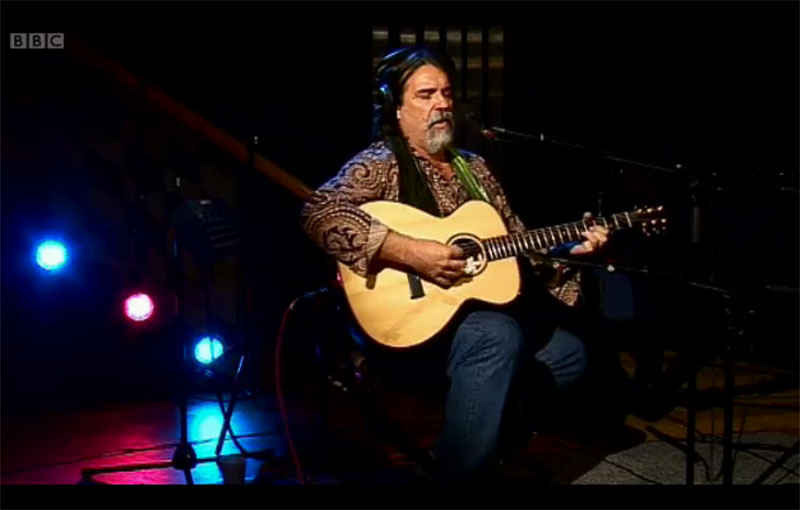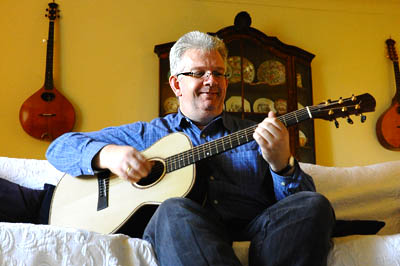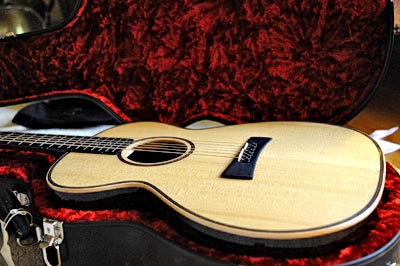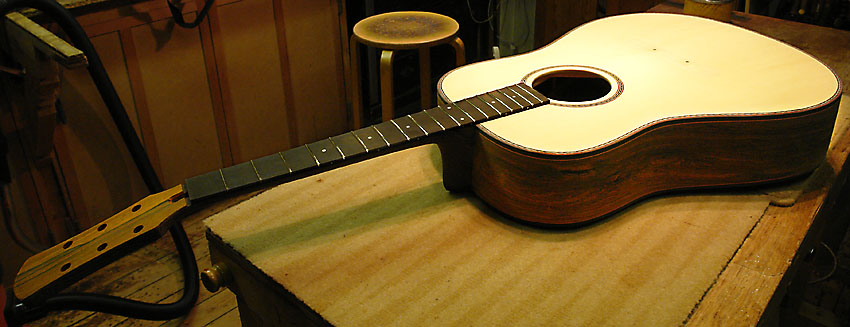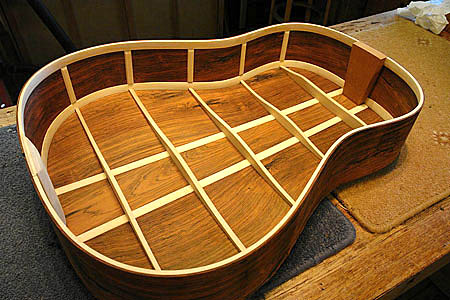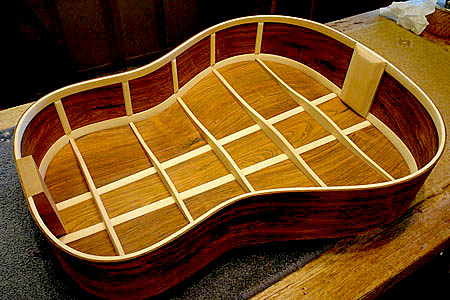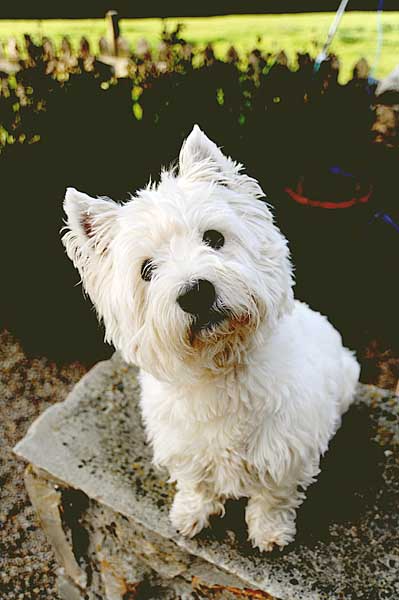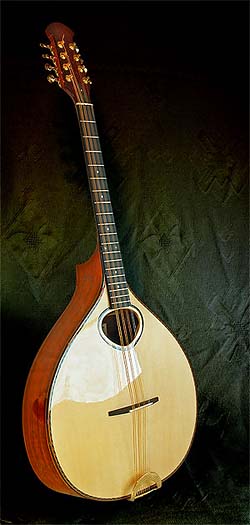[three_fourth]Carol MComb has sent pictures of her early cittern, asking me to date it. The label gives no date but it gives my present Old School workshop address along with my home telephone number at the time, a short lived combination.
I transferred my workshop from my home to the Old School in very late 1979, beginning work there at the start of 1980. In these pre-internet days, the telephone was vital, so I used an extension from my home phone even though this was one and a half miles away. This meant customers could contact me on the number I’d been using for several years.
However, the system didn’t work well. My ability to make and receive calls depended on the correct option at the home phone. When Liz used the phone she pressed the button for a different option, and then had to press the extension option when finished. Time and time again this didn’t happen, leaving me no contact with either home or the outside world. Short of going home myself, my only option was to call home from the nearby call box and ask a completely unrepentant Liz to press the appropriate button.
There was a further problem in that the extension line quality deteriorated drastically, giving more hiss than voice, especially in wet weather. Telephone company engineers were unable to find and fix the problem. For many years after I found myself shouting into telephones because of this.
For the next year the telephone company wanted to quadruple the cost of the extension, so I had a separate phone (with my current 567 number) installed. Thus simultaneously relieving pressure on my throat, wallet and marriage.
Only when engineers checked the line some time later did we find the cause of the poor sound quality. The line had been peppered with shot, piercing the insulation without breaking the wire. Clearly hunters shooting rabbits had found birds sitting on the line an irresistible target.
So all instruments with an Old School Label and a Slaley 338 telephone number were built in 1980 or very early 1981.

